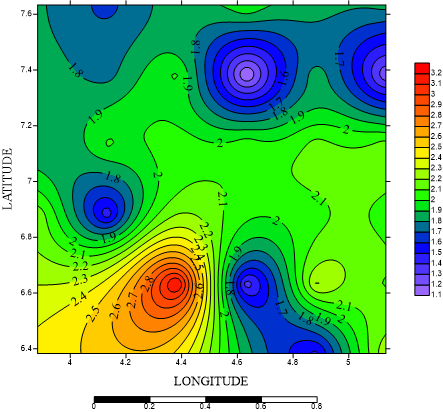Spectral analysis of aeromagnetic data over parts of Southwestern Nigeria
Keywords:
Aeromagnetic data, Spectral analysis, Spectral depths, Geothermal Signatures, Curie point depthAbstract
This study endeavors to assess spectral depths, explore Basement structure variability, and deduce geothermal heat distribution by determining Curie point depth (Zb) through aeromagnetic data analysis across 14 sheets in Southwestern Nigeria. The depths to the shallow magnetic source (Zt) range from 0.14286 km to 1.02632 km, indicating sediment thickness, with the deepest point situated in the Northwestern region and progressively shallower towards the central and Southern portions of the study area. Depths to the deeper magnetic source (Z0) span from 1.08333 km in the North-central part to 3.23529 km in the Southwestern part. The primary sources of the first layer (Zt) depth are intrusions/outcropping Basement rocks, while the second layer (Z0) results from the intrusion of magnetic rocks into the basement, intra-Basement fissures, and deeper magma intrusions below the bedrock. Curie point depth ranges from 1.87380 km to 6.25629 km, with the North-central region exhibiting the shallowest depths, followed by the Northeast, Northwest, and Southeast. Shallow Curie point depth is attributed to magma upwelling and magmatic intrusion in highly fractured quartzite units and older granite units, while deeper Curie point in the Southwestern part may result from isostatic compensation/recovery. Given that Curie point depths are shallower than 10 km, the study area holds geothermal resource potential, particularly in the North-central region. The correlation between estimated spectral depths from aeromagnetic data and observed geothermal signatures in the study area promises to be advantageous in the pursuit of alternative energy generation, potentially mitigating the effects of global warming.

Published
How to Cite
Issue
Section
Copyright (c) 2024 Prof. A. S. Oniku, Dr. E. Ike, Dr. S. C. Ezike, Dr. R. Ewusi-Wilson

This work is licensed under a Creative Commons Attribution 4.0 International License.







